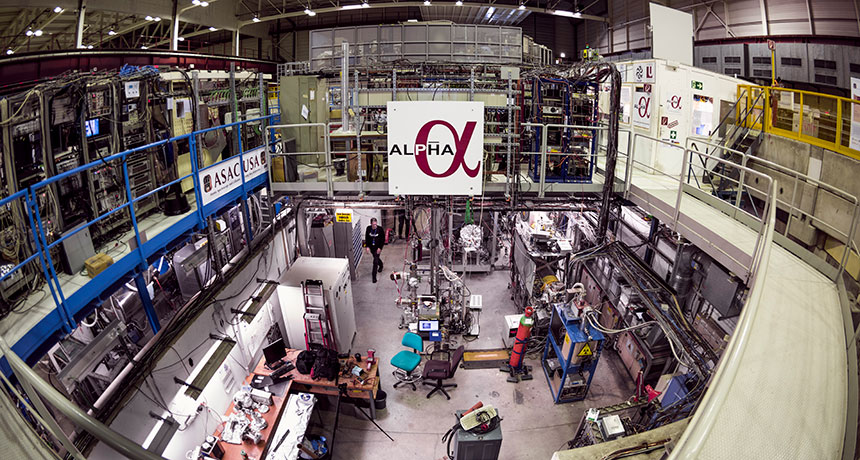Antimatter hydrogen passes symmetry test

An antimatter atom abides by the same rules as its matter look-alike. Scientists studying antihydrogen have found that the energy needed to bump the atoms into an excited, or high-energy, state is the same as for normal hydrogen atoms.
Scientists at the European particle physics lab CERN in Geneva created antihydrogen atoms by combining antiprotons and positrons, the electron’s antiparticle. Hitting the resulting atoms with a laser tuned to a particular frequency of light boosted the antihydrogen atoms to a higher energy. The frequency of laser light needed to induce this transition was the same as that needed for normal hydrogen atoms, indicating that the energy jump was the same, scientists from the ALPHA-2 experiment report December 19 in Nature.
Antihydrogen’s similarity to hydrogen conforms to a principle known as charge-parity-time, or CPT, symmetry — the idea that the laws of physics would be unchanged if the universe were reflected in a mirror, time reversed, and particles swapped with antiparticles. So far scientists have never discovered a situation where this symmetry doesn’t hold up, but antihydrogen provides a precise way to check for subtle breakdowns in the rule.
Differences between matter and antimatter are essential for the existence of the universe as we know it: The Big Bang produced equal amounts matter and antimatter, yet somehow antimatter became very rare. So scientists are still on the lookout for any unexpected behavior from antimatter.